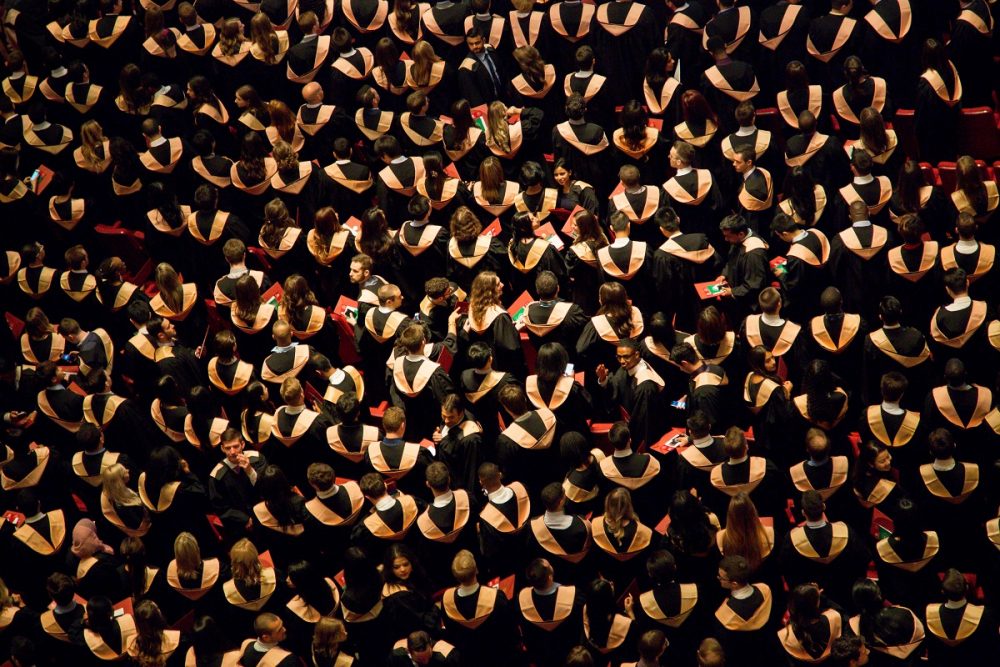Advertisement
Commentary
For Low-Income Students, Public Colleges Are The Ivy League For Economic Mobility

I agree with Ronald Reagan that the best social program is a job for those who can work. If that’s true, the second best social program is a college education that prepares people for those jobs. It’s really good news, then, that our public universities and colleges are better at getting low-income students up the economic ladder than experts realized.
The case for college as social mobility escalator got stronger earlier this year, when five economists published a study showing that public institutions don’t lag far behind elite private schools in getting the poorest students into the top fifth of the income scale. “What we found really surprising is other schools have outcomes nearly as good as Ivy League schools, but [they] admit many, many more poor students,” one of the study’s authors marveled.
...for all public colleges’ indisputable good, sticker shock at these once affordable bastions, which have lost vast support from their states in recent years, frightens away needy applicants with nightmares of lifelong debt.
The study buttressed what we’ve known for some time about the sound investment of a college degree. Four years ago, the multi-nation Organization for Economic Cooperation and Development reported that the average lifetime earnings premium from a college degree, after deducting its costs, was $365,000 for American men and $185,000 for women. (The difference owes to the gender pay gap.)
Finish a four-year college, the OECD said, and you’ll typically out-earn someone with just a high school diploma by a whopping 84 percent. Finish a two-year community college, and the earnings premium is still 16 percent. (The same study and other data show that historically black colleges and universities, which can be public or private, do a better job promoting social mobility than some analysts thought.)
Public universities in particular are a vital safety net investment, as they educate more than two-thirds of post-secondary students, while the nation’s 200-plus most selective schools, many of them private, have become playpens for the affluent, with few students from low-income families.
Yet for all public colleges’ indisputable good, sticker shock at these once affordable bastions, which have lost vast support from their states in recent years, frightens away needy applicants with nightmares of lifelong debt. That’s why free public university tuition, financed by redirecting all our higher education spending and to be paid back by graduates once they’re working, is a good idea.
Advertisement
Alas, our current presidential administration, preoccupied with such matters of state as travel bans of dubious legality and twit-tweets about the uncorroborated bugging of Trump Tower, is not exactly awash in ideas for education. And the few President Trump has proffered do not merit the adjective “good.”
President Trump has talked about changing payback terms for federal student loans in ways that would not benefit low-income borrowers. And as a candidate, he talked about ending government loans altogether in favor of private lenders. I generally prefer private approaches as a first resort, but private loans typically carry higher interest rates and less generous repayment terms — hardly a recipe for boosting low-income enrollments and college completion rates.
Public universities...are a vital safety net investment, as they educate more than two-thirds of post-secondary students, while the nation’s 200-plus most selective schools, many of them private, have become playpens for the affluent ...
For now, anyway, it appears we’ll have to rely on innovation at the state level. Academia can be as goofy as the Trump administration; many schools give lots of “merit-based” financial aid, regardless of need, to lure brainiacs that will boost graduation rates (and hence ratings in forums like US News & World Report). The University of Kentucky, God bless it, has declared “enough” of such antics. Now giving 90 percent of its aid in merit-based assistance, the school plans to shift to 65 percent need-based by 2021.
But as for help from Washington, D.C.? Our president reminds me of a campaign ad run against a New Hampshire governor years ago who’d promised education reform but hadn’t produced specifics. The ad featured a Sherlock Holmes figure in deerskin cap searching all sorts of nooks and crannies, each time pronouncing, “No plan here.”
